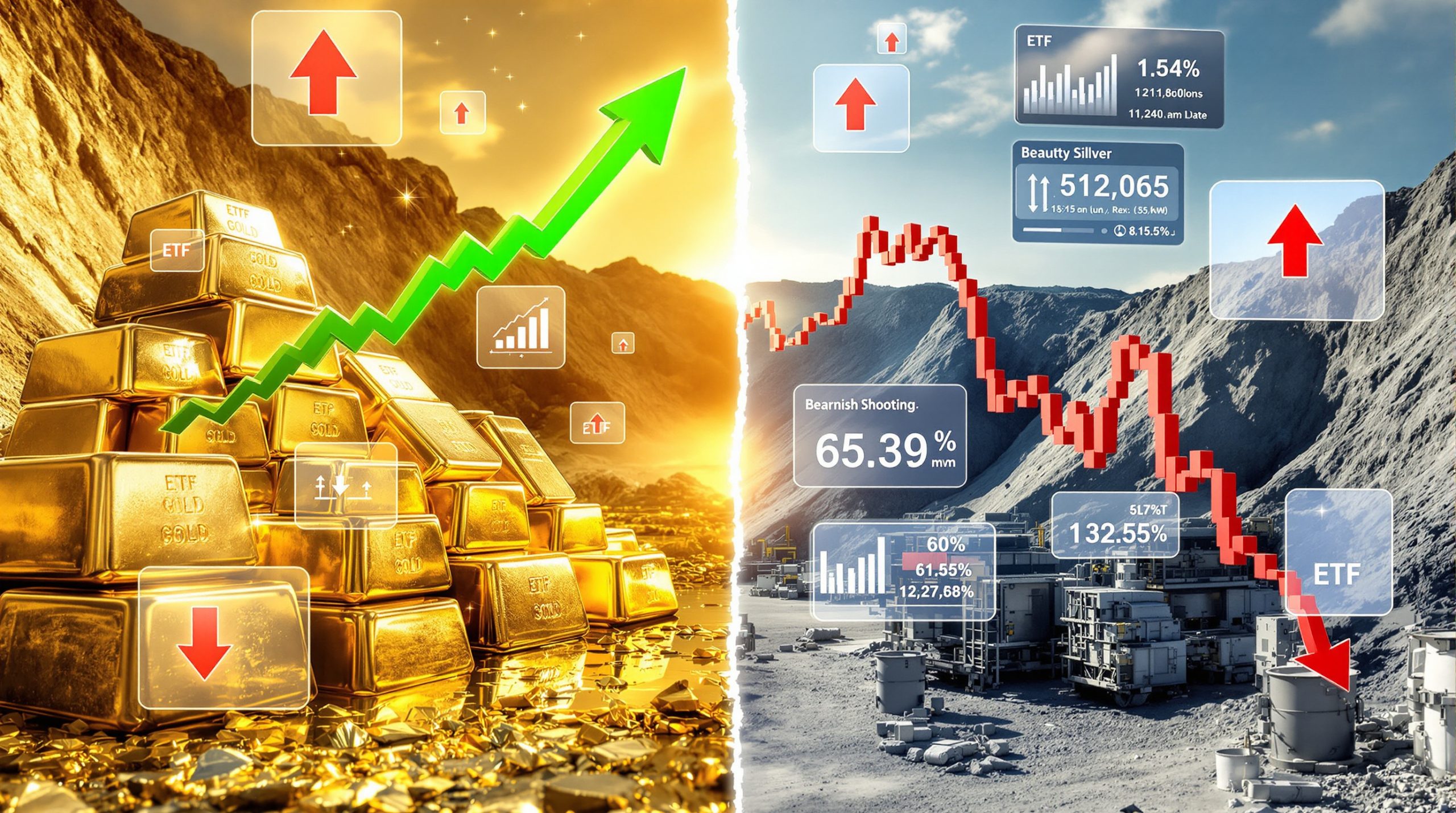What Factors Are Driving Zinc Price Volatility?
Global Economic Indicators Impact on Zinc Markets
The global zinc market continues to experience significant volatility as multiple economic indicators exert pressure from different directions. Recent data reveals concerning trends in US economic performance, with the S&P Global Services PMI falling to 50.8 in April 2025, marking a decline from previous readings and falling below market expectations. This reading, barely above the 50-point threshold that separates growth from contraction, signals potential weakness in a key zinc-consuming economy.
Further compounding these concerns, the US trade deficit widened to a record $140.5 billion in March 2025, indicating ongoing trade imbalances that typically pressure commodity markets. Economic analysts at Shanghai Metal Market (SMM) note that these indicators contribute to uncertainty in industrial metal demand outlooks.
"The correlation between dollar index movements and zinc price shifts has become increasingly pronounced in recent months," explains SMM senior analyst Wei Chen. "We're observing almost immediate price responses to currency fluctuations, with strengthening dollar values consistently driving downward pressure on LME zinc prices."
Meanwhile, Chinese authorities have implemented a series of supportive monetary policies to bolster domestic economic activity. The People's Bank of China (PBOC) Governor Pan Gongsheng recently announced multiple measures including strategic reserve requirement ratio (RRR) cuts and interest rate reductions. Additionally, the central bank lowered interest rates on personal housing provident fund loans, targeting support for the construction sector—a significant zinc consumer.
These contrasting economic signals—US slowdown versus Chinese stimulus—create the perfect environment for zinc prices maintain fluctuating trend as market participants react to conflicting macroeconomic forces.
Geopolitical Tensions Creating Market Uncertainty
Geopolitical factors have emerged as major drivers of zinc price fluctuations in recent months. Comments from former President Trump regarding Middle East policy have repeatedly triggered market speculation about potential changes in international relations and trade conditions. Each announcement creates ripple effects through commodity markets, with zinc being particularly sensitive due to its industrial applications.
"Trump hinted at a major trade announcement during his upcoming Middle East visit, indicating another sign of potential easing in the ongoing US‑China trade war," notes an SMM report from May 2025. "Markets responded positively to these signals, though volatility remains elevated due to uncertainty about concrete policy changes."
Simultaneously, EU-US tariff negotiations have introduced additional uncertainty. The European Union has threatened to impose retaliatory tariffs and markets on US goods if current negotiations fail to produce an agreement. This development has created significant concerns about supply chain disruptions and increased production costs across zinc-dependent industries.
The compounding effect of these geopolitical tensions manifests in risk-averse market sentiment during periods of heightened uncertainty. Trading patterns reveal clear correlations between political announcements and immediate price reactions, with many institutional investors reducing exposure to industrial metals during particularly volatile periods.
How Are LME and SHFE Zinc Markets Performing?
LME Zinc Price Analysis
London Metal Exchange (LME) zinc closed at $2,601 per metric ton as of Thursday, representing a $14/mt (0.54%) weekly decline according to the latest SMM data. This performance reflects the complex interplay of global factors currently influencing the market.
Trading patterns were disrupted by a holiday closure at the beginning of the week, creating atypical volume and liquidity conditions. When trading resumed, prices showed an immediate positive response to Chinese monetary policy announcements, briefly surging 1.2% before encountering resistance.
However, this momentum was short-lived. The Federal Reserve's decision to maintain current interest rates without clear signals about future reductions created significant downward pressure. During the press conference, Fed Chairman Powell reiterated the central bank's cautious approach, stating they would "wait for a clearer economic outlook before implementing rate adjustments."
The subsequent strengthening of the dollar index directly correlated with LME zinc price declines, with a 1.8% drop following the Fed announcement. Technical analysts note this relationship has intensified in 2025, with dollar strength consistently translating to zinc weakness due to the metal's dollar-denominated trading structure.
LME warehouse inventories have remained relatively stable, providing some fundamental support despite macroeconomic headwinds. Current technical indicators suggest a trading range between $2,550-$2,650/mt in the near term, with significant support at the $2,500 psychological threshold.
SHFE Zinc Market Trends
Shanghai Futures Exchange (SHFE) zinc closed at 22,175 yuan/mt, down 265 yuan/mt (1.18%) for the week, underperforming its LME counterpart slightly. The Labor Day holiday in China temporarily suspended trading, contributing to increased volatility upon market reopening.
Post-holiday inventories revealed interesting dynamics in the domestic market. Social inventory was recorded at 84,100 metric tons, showing a slight buildup compared to pre-holiday levels but remaining at relatively low levels from a historical perspective. Industry analysts at SMM note this inventory situation continues to provide fundamental price support despite other bearish factors.
"The current inventory levels represent approximately two weeks of consumption at current rates," explains Zhang Min, zinc market analyst at SMM. "This relatively tight supply situation prevents significant price collapses despite the gradual entry into the seasonal consumption slowdown period."
SHFE zinc showed pronounced sensitivity to domestic monetary policy announcements, with prices surging immediately after PBOC Governor Pan Gongsheng's statements about stimulative measures. However, these gains were largely erased as global factors and seasonal patterns reasserted their influence.
Technical analysis indicates SHFE zinc is currently trading in a consolidation pattern between 22,000–22,500 yuan/mt, with increased volatility expected as market participants adjust positions based on emerging economic data and policy changes.
What Supply and Demand Factors Are Influencing Zinc Markets?
Current Inventory Levels and Consumption Patterns
The post-holiday social inventory level of 84,100 metric tons represents a critical fundamental factor providing underlying price support. This figure, while showing a slight buildup compared to the previous reporting period, remains significantly below five-year average levels for this season. The relatively tight supply situation creates a floor for prices despite other bearish influences.
Seasonal consumption patterns show zinc markets are gradually entering the traditional off-season in China. Historical data indicates May-July typically sees reduced galvanizing activity due to construction slowdowns during the summer months. However, the intensity of this seasonal effect has varied significantly in recent years due to policy interventions and changing industrial practices.
A particularly noteworthy development concerns zinc concentrate treatment charges (TCs), which function as a key indicator of raw material availability. SMM data reveals TC growth rates slowed significantly in May 2025, raising important questions about whether charges are approaching their cyclical peak.
"The TC slowdown suggests potential tightness emerging in the concentrate market," notes Dr. Li Wei, minerals economist at Beijing Mining Institute. "If this trend continues, it could signal an important inflection point in the zinc supply chain, potentially creating upward price pressure in late 2025."
What are Treatment Charges (TCs)?
Treatment charges are fees paid by miners to smelters for processing zinc concentrate into refined metal. Rising TCs indicate abundant concentrate supply relative to smelting capacity, while falling TCs suggest tightening raw material availability. These charges function as key leading indicators for refined zinc price trends.
The combination of relatively low finished metal inventories and potentially peaking concentrate charges creates a complex supply picture that partially offsets bearish demand factors.
Production and Manufacturing Indicators
Recent industrial surveys reveal zinc oxide enterprises are actively increasing production capacity, with several major facilities expanding operations in anticipation of future demand growth. This capacity expansion appears somewhat contradictory to current consumption indicators, suggesting producers may be positioning for expected policy-driven demand improvements.
Terminal orders for galvanized products, however, are showing potential signs of weakening. Manufacturing purchasing manager surveys indicate reduced forward ordering, particularly in construction-related applications. This trend aligns with the typical seasonal consumption pattern but raises concerns about the effectiveness of recent stimulus measures.
"We're observing a bifurcated market where producers remain optimistic while end-users exercise caution," explains Wang Jing, senior metals analyst at Eastern Securities. "This divergence creates a volatile price environment as market participants react differently to the same economic signals."
Regional consumption patterns show significant variation, with coastal manufacturing hubs maintaining relatively stable zinc demand while interior provinces experience more pronounced seasonal fluctuations. This geographic disparity contributes to market uncertainty and complicates inventory management strategies throughout the supply chain.
Despite these mixed signals, the consistently low overall inventory levels continue to provide meaningful price support. The current stocks-to-consumption ratio remains below historical averages, creating a fundamental buffer against more severe price declines.
How Are Central Bank Policies Affecting Zinc Markets?
Chinese Monetary Policy Developments
The People's Bank of China has implemented a multi-faceted approach to economic stimulus, with Governor Pan Gongsheng recently announcing several supportive measures at a State Council press conference. These initiatives include strategic reserve requirement ratio (RRR) cuts designed to increase banking system liquidity and support lending to productive sectors.
Additionally, the PBOC implemented targeted interest rate reductions aimed at reducing financing costs for businesses, particularly in manufacturing and infrastructure development—both key zinc-consuming sectors. Perhaps most significantly for metal markets, authorities reduced interest rates on personal housing provident fund loans, directly supporting the property sector that accounts for approximately 35% of Chinese zinc consumption.
"The combination of these measures represents a comprehensive approach to supporting domestic demand," notes financial analyst Chen Wei of Huatai Securities. "For zinc markets specifically, the property sector support could prove particularly significant given its outsized influence on consumption patterns."
Market response to these supportive domestic policy announcements has been immediately positive but somewhat limited in duration. SHFE zinc prices typically surge following policy statements but struggle to maintain momentum as participants assess the practical implementation timeline and likely effectiveness of the measures.
Historical precedent suggests a 3-6 month lag between monetary policy adjustments and measurable impacts on industrial metal consumption. This time delay creates a challenge for traders attempting to balance immediate market reactions against longer-term fundamental changes.
US Federal Reserve Policy Impact
In stark contrast to Chinese easing, the US Federal Reserve continues to maintain current interest rates without immediate reduction plans. During the latest policy announcement, Fed Chairman Powell reiterated the central bank's cautious approach, emphasizing the need to see sustained progress on inflation before implementing rate cuts.
This policy divergence between the world's two largest economies creates significant complications for global zinc markets. The maintenance of higher US rates supports dollar strength, which directly pressures dollar-denominated LME zinc prices by making the metal more expensive for non-dollar buyers.
"The Fed's stance is creating a headwind for base metals across the board," explains Dr. Michael Sullivan, commodities strategist at Global Market Analysis. "The interest rate differential between China and the US is widening, creating currency effects that often overwhelm fundamental supply-demand factors in short-term price movements."
The dollar index has strengthened by approximately 3.2% since the beginning of 2025, closely correlating with periods of weakness in LME zinc prices. Technical analysis reveals that days with significant dollar appreciation typically see zinc price declines of 0.8-1.2%, illustrating the powerful influence of monetary policy on commodity markets.
Market expectations for Fed policy have shifted significantly in recent months, with futures markets now pricing in only one potential rate cut in late 2025, down from earlier expectations of three reductions. This evolving outlook continues to create both downward pressure and increased volatility in zinc markets.
What's the Outlook for Zinc Prices?
Technical Analysis of Price Trends
Both LME and SHFE zinc markets are maintaining fluctuating trends amid mixed fundamental and macroeconomic signals. Technical indicators reveal several key levels that currently define the trading range and may determine future price direction.
For LME zinc, critical support has developed at the $2,550/mt level, which has successfully held during several recent testing events. This support coincides with the 200-day moving average, increasing its technical significance. On the upside, resistance has proven stubborn around $2,650/mt, creating a well-defined trading channel that has contained price action for several weeks.
SHFE zinc displays similar technical characteristics, with support established near 21,800 yuan/mt and resistance encountered around 22,500 yuan/mt. The convergence of multiple technical indicators at these levels reinforces their importance for near-term price direction.
Momentum indicators present a mixed picture, with the Relative Strength Index (RSI) in neutral territory suggesting neither overbought nor oversold conditions. Moving average relationships indicate a slightly bearish bias but without strong directional signals.
"The technical picture reflects the fundamental uncertainty currently pervading zinc markets," notes Wang Chen, technical analyst at SMM. "Price action suggests a market seeking direction rather than trending confidently in either direction."
Trading patterns indicate continued volatility is likely in the near term, with range-bound conditions potentially persisting until clearer macroeconomic signals emerge. Volume analysis shows declining participation during rally attempts, suggesting limited conviction from buyers at current price levels.
Key Factors to Monitor
Market participants should closely track several critical developments that could drive zinc prices out of their current trading range:
-
International trade negotiations: The outcome of EU-US tariff discussions and any concrete announcements following Trump's Middle East visit could significantly impact market sentiment. Resolution of trade tensions would likely provide upside potential.
-
Central bank policy developments: Any shifts in Fed rhetoric suggesting earlier rate cuts would likely pressure the dollar and support zinc prices. Similarly, concrete implementation details of Chinese stimulus measures will influence domestic consumption expectations.
-
Seasonal consumption patterns: The depth and duration of the traditional summer slowdown in galvanizing activity will be critical in determining near-term price direction. Deviations from seasonal norms could signal changing fundamental conditions.
-
Inventory level changes: Any significant drawdown in social inventories would suggest stronger-than-expected consumption and potentially drive prices higher. Conversely, accelerating inventory builds would indicate demand weakness.
-
Treatment charge trends: Continued slowing or reversal in TC growth rates would signal tightening concentrate market conditions, potentially providing longer-term price support through the supply chain.
Industry experts emphasize the importance of monitoring multiple indicators simultaneously rather than focusing on any single factor. The current market environment requires a holistic analytical approach due to the complex interplay of economic, policy, and technical influences.
FAQ About Zinc Market Conditions
How are zinc prices responding to global trade tensions?
Zinc prices have shown increased volatility during periods of trade tension announcements, with prices typically declining when uncertainty increases and recovering when signs of trade war easing emerge. This pattern reflects zinc's significant exposure to international trade flows, with approximately 35% of global production crossing international borders before consumption.
Recent examples include the 1.2% single-day decline in LME zinc following the EU's tariff threat announcement, followed by a 0.8% recovery after Trump's comments suggesting potential easing. These rapid reversals highlight the market's sensitivity to changing trade rhetoric.
What impact do Chinese monetary policies have on zinc markets?
Recent Chinese monetary easing measures, including RRR cuts and interest rate reductions, have provided positive support for zinc prices, particularly in the SHFE market. The immediate market response typically involves price increases of 1-2% following significant policy announcements.
However, the sustainability of these gains depends on actual implementation and effectiveness in stimulating zinc-consuming sectors. The property market measures are particularly significant, as construction accounts for approximately 35% of Chinese zinc demand through galvanized steel applications.
Are zinc inventories currently at normal levels?
While there has been a slight post-holiday buildup, current social inventory levels of 84,100 metric tons remain relatively low compared to historical averages, providing some price support despite seasonal consumption slowdown. This figure represents approximately 60% of typical May inventory levels observed during 2018-2022, indicating continued tightness in physical markets.
Regional variations are significant, with inventories in Southern China showing greater tightness than those in Eastern industrial hubs. This geographic disparity creates localized premiums and discounts that impact physical market transactions beyond the futures price.
How are treatment charges (TCs) trending in the zinc concentrate market?
Treatment charges have shown a significant slowdown in growth rate during May 2025, raising questions about whether TCs may be approaching their peak levels. Current spot TCs for domestic Chinese concentrate are approximately 15-20% higher than year-earlier levels, but the rate of increase has declined notably in recent weeks.
This potential inflection point requires close monitoring, as TC trends typically lead refined metal price movements by 3-6 months. If the current slowdown continues or reverses, it could signal future upward pressure on refined zinc prices through tightening raw material availability.
What seasonal factors are currently influencing zinc markets?
The zinc market is gradually entering its traditional consumption off-season, which typically creates some downward pressure on prices despite supportive inventory levels. Historical patterns show May-July experiencing reduced galvanizing activity due to construction slowdowns during summer months in the Northern Hemisphere.
This seasonal effect typically results in price weakness of 5-8% from peak to trough, though the magnitude varies based on other factors. The current year's seasonal pattern appears to be developing in line with historical norms, though slightly moderated by the unusually low inventory situation.
Disclaimer: This analysis contains forward-looking statements and market projections based on current data and historical patterns. Actual market developments may differ significantly due to unforeseen economic events, policy changes, or other factors. Readers should consider this analysis as one input into their decision-making process rather than a defin
Ready to Spot the Next Mining Breakthrough?
Stay ahead of the market with real-time alerts on significant ASX mineral discoveries through Discovery Alert's proprietary Discovery IQ model, turning complex zinc market data into actionable investment opportunities. Explore why major mineral discoveries can lead to exceptional returns by visiting the dedicated discoveries page and begin your 30-day free trial today.




